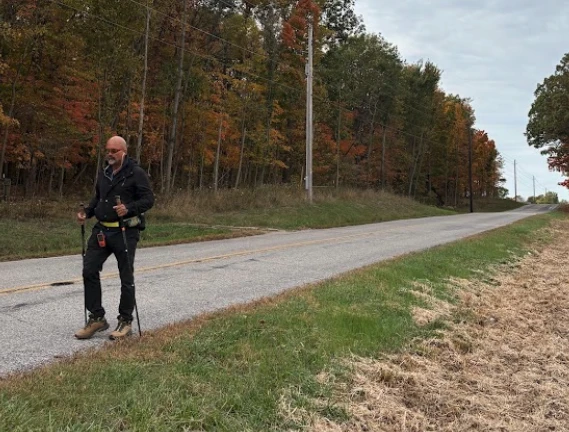

Father Gary Graf walks down a rural road during his trek across America in support of immigrants on Friday, Oct. 17, 2025. / Credit: Photo courtesy of Father Gary Graf
CNA Staff, Nov 24, 2025 / 06:00 am (CNA).
After a month and a half of walking an average of 17 miles a day, 67-year-old Father Gary Graf said he is starting to get “a little pain in one shin,” but his broken ribs are “getting much better.”
On Oct. 6, Graf, a Catholic priest from Chicago, began a journey on foot from Pope Leo XIV’s childhood home in Dolton, Illinois, to New York City to bring attention to the plight of immigrants amid the sometimes “inhumane” ways the Trump administration is treating them during its immigration enforcement actions.
He hopes to arrive at the Statue of Liberty on Ellis Island, where his own great-grandparents entered the country as immigrants, by Dec. 2.

A few weeks ago, when visiting a parish in Indiana, he was invited to ride a horse. He fell off as it galloped and broke several ribs, which led him to take one day off to recover. That day, friends walked in his stead.
Graf, the pastor of the mostly Hispanic Our Lady of the Heights Catholic Church in Chicago Heights and a longtime member of Priests for Justice for Immigrants, has committed his life to helping immigrants. Ordained in 1984, he spent five years as a priest in Mexico serving a people “with whom I fell deeply in love.”
He told CNA that after initially feeling helpless watching the raids taking place against his beloved community in his hometown of Chicago, he “felt a call that was directly from above” to start walking.

Within weeks, he was on the road. He first spoke to an old friend about his idea, who immediately connected him with Lauren Foley, the head of a public relations firm. She “immediately embraced the idea,” and between her help and that of some “young people who understand social media,” a website as well as social media accounts were set up to chronicle his journey and to share the stories of immigrant families.
Of the immigrants on whose behalf he is walking, Graf said: “I look to help people who get up every single morning to work and raise their families. If I can do this small gesture on their behalf, what a blessing it is, what a privilege.”
Asked about the most profound insight he has gained thus far, Graf said his long days walking through the wide expanse of rural America have helped him understand better the ways of people who did not grow up in a multicultural city like he did.
“We have to reverently appreciate and try to connect with those whose lives we’re passing through,” he said.
As he has spoken with people in diners along his path, Graf has developed “a greater sensitivity,” discovering that “there’s not a lot of animosity against the immigrant.”
Many of the people he has met simply do not know any, he said.
Along the way, he has also experienced unity with Christians from other denominations, as well as with those without religious faith, who all care about the humane treatment of human beings.
“I have seen so much goodness,” he said. “This has brought so many of us together: people from many different faith traditions, or none. This is an opportunity given to us.”
During his quiet walks through rural farmland, he has marveled at the amount of labor it took to build the many roads, bridges, and overpasses he has seen.
“I’m sure the hands of many immigrants helped build these things,” he reflected.
Graf said he is delighted that both the U.S. Conference of Catholic Bishops and Pope Leo XIV addressed the immigration enforcement situation in the past week.
The U.S. bishops issued a special message during its Fall Plenary Assembly two weeks ago, calling for “a meaningful reform of our nation’s immigration laws and procedures.” The bishops argued that “human dignity and national security are not in conflict. Both are possible if people of goodwill work together.”
The pope echoed the bishops’ message. On Nov. 18, he acknowledged to reporters that “every country has a right to determine who and how and when people enter.”
“But when people are living good lives, and many of them for 10, 15, 20 years, to treat them in a way that is extremely disrespectful, to say the least — and there’s been some violence, unfortunately — I think that the bishops have been very clear in what they said.”
“I think that I would just invite all people in the United States to listen to them,” the pope said.
“Both the pope and the bishops used the word ‘indiscriminate’ to talk about the way people are being singled out and aggressively having their wrists zip-tied behind their backs as their faces are pushed to the ground in front of their children,” Graf said.
“It is indeed indiscriminate. This reflects dishonesty on the administration’s part,” he said. “They said they were going after the ‘worst of the worst,’ criminals, but this isn’t the case, at least in Chicago. They’re grabbing people first and asking questions later.”
“The violent way many of these people are being treated is amoral and un-American,” he said.
Like the pope and the American bishops, Graf said he hopes the federal government will establish a more humane immigration system that respects the dignity of immigrants as well as the rule of law and the country’s right to regulate its borders.
“I am not a politician,” he said. “My job is to mediate, to speak up, in God’s name, in the united name of the Church. But can we look for a way for those who are fulfilling their responsibilities; for them to one day receive the rights of citizens?”
The priest, who appeared on “EWTN News Nightly” in October, said he has been “impressed by the media” and is grateful his message is being spread.
“If we don’t hear the whole truth, the incredible ignorance and darkness we live in can paralyze us, and keep us from doing what we ought to do,” he said.
Read More

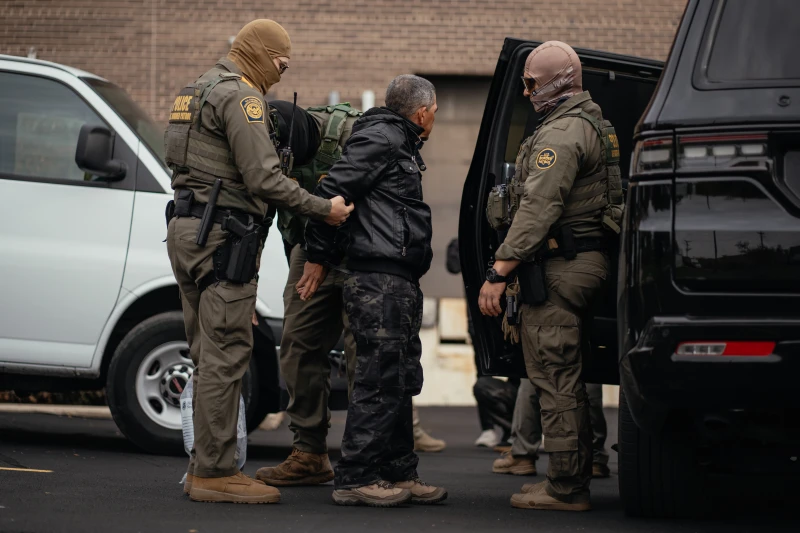

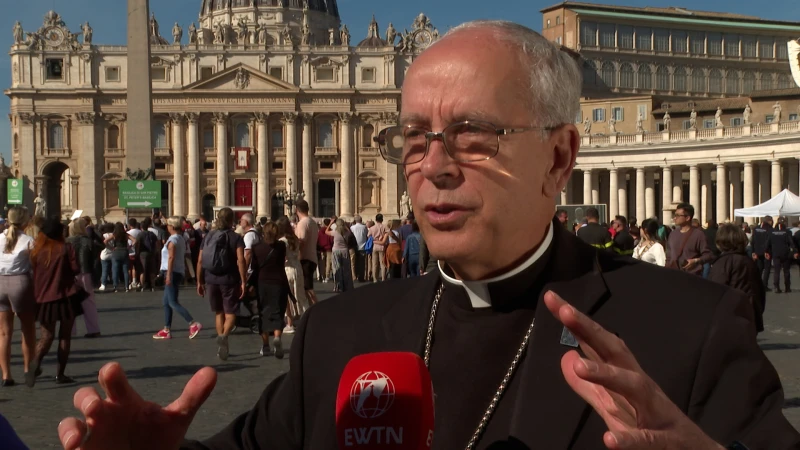
















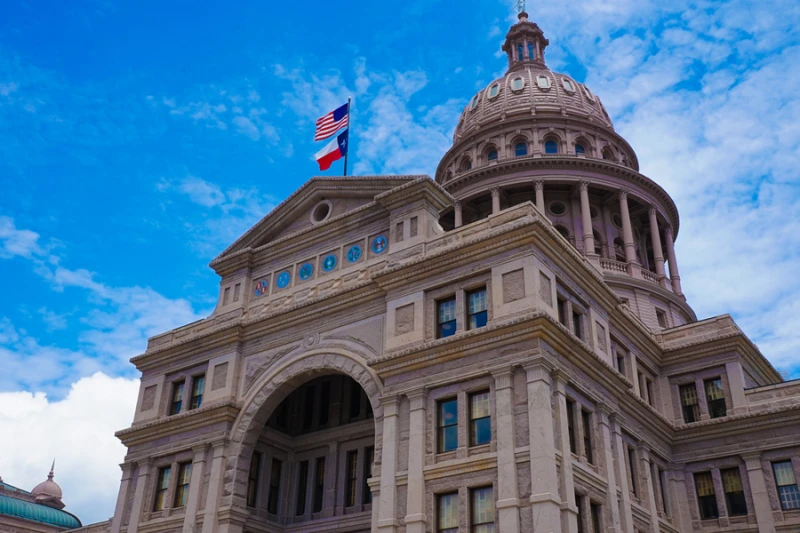

![‘Every execution should be stopped’: How U.S. bishops work to save prisoners on death row #Catholic
null / Credit: txking/Shutterstock
CNA Staff, Oct 25, 2025 / 06:00 am (CNA).
Bishops in multiple U.S. states are leading efforts to spare the lives of condemned prisoners facing execution — urging clemency in line with the Catholic Church’s relatively recent but unambiguous declaration that the death penalty is not permissible and should be abolished. Executions in the United States have been increasingly less common for years. Following the death penalty’s re-legalization by the U.S. Supreme Court in 1976, executions peaked in the country around the turn of the century before beginning a gradual decline.Still, more than 1,600 prisoners have been executed since the late 1970s. The largest number of those executions has been carried out in Texas, which has killed 596 prisoners over that time period.As with other states, the Catholic bishops of Texas regularly petition the state government to issue clemency to prisoners facing death. Jennifer Allmon, the executive director of the Texas Catholic Conference of Bishops, told CNA that the state’s bishops regularly urge officials to commute death penalty sentences to life in prison. “We refer to it as the Mercy Project,” she said. Though popular perception holds that the governor of a state is the ultimate arbiter of a condemned prisoner’s fate, Allmon said in Texas that’s not the case. “The state Board of Pardons and Paroles has the ultimate authority,” she said. “The governor is only allowed to issue a 30-day stay on an execution one time. He doesn’t actually have the power to grant a permanent clemency.” “We don’t encourage phone calls to the governor because it’s not going to be a meaningful order,” she pointed out. “The board has a lot more authority.”Allmon said the bishops advocate on behalf of every condemned prisoner in the state. “We send a letter to the Board of Pardons and Paroles and copy the governor for every single execution during the time period when the board is reviewing clemency applications,” she said. “Typically they hold reviews about 21 days before the execution. We time our letters to arrive shortly before that.” “We research every single case,” she said. “We speak to the defendant’s legal counsel for additional information. We personalize each letter to urge prayer for the victims and their families, we mention them by name, and we share any mitigating circumstances or reason in particular that the execution is unjust, while always acknowledging that every execution should be stopped.”Some offenders, Allmon said, want to be executed. “We do a letter anyway. We think it’s important that on principle we speak out for every execution.”In Missouri, meanwhile, the state’s Catholic bishops similarly advocate for every prisoner facing execution by the government. Missouri has been among the most prolific executors of condemned prisoners since 1976. More than half of the 102 people executed there over the last 50 years have been under Democratic governors; then-Gov. Mel Carnahan oversaw 38 state executions from 1993 to 2000 alone. Jamie Morris, the executive director of the Missouri Catholic Conference, told CNA that the state bishops “send a clemency request for every prisoner set to be executed, either through a letter from the Missouri Catholic Conference or through a joint letter of the bishops.”“We also highlight every upcoming execution through our MCC publications and encourage our network to contact the governor to ask for clemency,” he said. Individual dioceses, meanwhile, carry out education and outreach to inform the faithful of the Church’s teaching on the death penalty. What does the Church actually teach?The Vatican in 2018 revised its teaching on the death penalty, holding that though capital punishment was “long considered an appropriate response” to some crimes, evolving standards and more effective methods of imprisonment and detention mean the death penalty is now “inadmissible because it is an attack on the inviolability and dignity of the person.”The Church “works with determination for its abolition worldwide,” says the Catechism of the Catholic Church, the revision of which was approved by Pope Francis. The Church’s revision came after years of increasing opposition to the death penalty by popes in the modern era. Then-Pope John Paul II in 1997 revised the catechism to reflect what he acknowledged was a “growing tendency, both in the Church and in civil society, to demand that [the death penalty] be applied in a very limited way or even that it be abolished completely.”The Death Penalty Information Center says that 23 states and the District of Columbia have abolished capital punishment. Morris told CNA that bills to abolish the death penalty are filed “every year” in Missouri, though he said those measures have “not been heard in a legislative committee” during his time at the Catholic conference. Bishops have thus focused their legislative efforts on advocating against a provision in the Missouri code that allows a judge to sentence an individual to death when a jury cannot reach a unanimous decision on the death penalty. Brett Farley, who heads the Catholic Conference of Oklahoma, said the state’s bishops have been active in opposing capital punishment there after a six-year moratorium on the death penalty lapsed in 2021 and executions resumed. Oklahoma City Archbishop Paul Coakley and Tulsa Bishop David Konderla “have been very outspoken both in calling for clemency of death row inmates and, generally, calling for an end to the death penalty,” Farley said. The prelates have called for abolition via Catholic publications and in op-eds, he said.The state’s bishops through the Tulsa Diocese and Oklahoma City Archdiocese have also instituted programs in which clergy and laity both minister to the condemned and their families, Farley said. The state Catholic conference, meanwhile, has led the effort to pass a proposed legislative ban on the death penalty. That measure has moved out of committee in both chambers of the state Legislature, Farley said. “We have also commissioned recent polls that show overwhelming support for moratorium among Oklahoma voters, which demonstrate as many as 78% agreeing that ‘a pause’ on executions is appropriate to ensure we do not execute innocent people,” he said. Catholics across the United States have regularly led efforts to abolish the death penalty. The Washington, D.C.-based group Catholic Mobilizing Network, for instance, arose out of the U.S. bishops’ 2005 Catholic Campaign to End the Use of the Death Penalty. The group urges activists to take part in anti-death penalty campaigns in numerous states, including petitioning the federal government to end the death penalty, using a “three-tiered approach of education, advocacy, and prayer.”Catholics have also worked to end the death penalty at the federal level. Sixteen people have been executed by the federal government since 1976. Executions in the states have increased over the last few years, though they have not come near the highs of the late 1990s and early 2000s. Allmon said Texas is seeing “fewer executions in general” relative to earlier years. The number of executions was very high under Gov. Rick Perry, she said; the Republican governor ultimately witnessed the carrying out of 279 death sentences over his 15 years as governor. Since 2015, current Gov. Greg Abbott has presided over a comparatively smaller 78 executions. “It still shouldn’t happen,” she said, “but it’s a huge reduction.”](https://unitedyam.com/wp-content/uploads/2025/10/every-execution-should-be-stopped-how-u-s-bishops-work-to-save-prisoners-on-death-row-catholic-null-credit-txking-shutterstockcna-staff-oct-25-2025-0600-am-cna-bi.webp)

![Alabama executes man by nitrogen gas after Supreme Court denies request for firing squad #Catholic
The state of Alabama on Oct. 23, 2025, executed convicted murderer Anthony Boyd by nitrogen gas just hours after the U.S. Supreme Court refused to consider requiring the state to execute him by firing squad instead. / Credit: Alabama Department of Corrections via AP, File
CNA Staff, Oct 24, 2025 / 11:32 am (CNA).
The state of Alabama on Thursday executed convicted murderer Anthony Boyd by nitrogen gas just hours after the U.S. Supreme Court refused to consider requiring the state to execute him by firing squad instead.Boyd reportedly took around 20 minutes to die from the execution method, according to the Associated Press. The news wire said he “clenched his fist, raised his head off the gurney slightly, and began shaking,” after which he became still but continued with a series of “heaving breaths” for “at least 15 minutes.”The Alabama man was convicted of capital murder in the 1993 killing of Gregory Huguley in Talladega County. Huguley was taped up, doused with gasoline, and set on fire. Boyd proclaimed his innocence until the last minutes of his life. “I didn’t kill anybody. I didn’t participate in killing anybody,” he said on Oct. 23 prior to being executed. The protracted execution came on the same day that the U.S. Supreme Court refused to consider whether the execution by nitrogen gas violates the Eighth Amendment’s prohibition on cruel and unusual punishment. Nitrogen gas is a relatively new execution method in the U.S. In January 2024 Alabama executed Kenneth Smith with gas, the first time in U.S. history that such a method was used. Witnesses said Smith writhed for several minutes while being administered the gas and was observed breathing for a considerable amount of time during the execution itself. Advocates have warned that the process is drawn-out and painful for victims of execution. Boyd had asked the U.S. Supreme Court to consider requiring Alabama to execute him by firing squad. The Supreme Court declined to consider the case.In a scathing dissent ahead of the execution, Justice Sonia Sotomayor accused the high court of “turn[ing] its back” on Boyd and on the Constitution. Sotomayor, who was joined by Justice Elena Kagan and Justice Ketanji Brown Jackson, pointed to several other executions by nitrogen gas, including Kenneth Smith’s, noting reports that inmates have been seen “violent[ly] convulsing, eyes bulging, [and] thrashing against the restraints” while they are killed. All condemned prisoners suffer “distress” ahead of their executions, Sotomayor said. But drawn-out methods of execution like that of nitrogen gas create suffering “after the execution begins and while it is being carried out to completion.”Prisoners are not guaranteed a painless death under the Eighth Amendment, Sotomayor acknowledged.“But when a state introduces an experimental method of execution that superadds psychological terror as a necessary feature of its successful completion, courts should enforce the Eighth Amendment’s mandate against cruel and unusual punishment,” she said.Ahead of Boyd’s execution, the anti-death penalty group Catholic Mobilizing Network said capital punishment “remind[s] us how critically important it is that we include the abolition of the death penalty in our respect life advocacy.”“May we see the dignity of [Boyd] and of every individual sentenced to death, remembering always that no person is defined by the worst thing they’ve ever done,” the group said.](https://unitedyam.com/wp-content/uploads/2025/10/alabama-executes-man-by-nitrogen-gas-after-supreme-court-denies-request-for-firing-squad-catholic-the-state-of-alabama-on-oct-23-2025-executed-convicted-murderer-anthony-boyd-by-nitrogen-gas-j.webp)

![Author of religious freedom report weighs in on Cardinal Parolin’s Nigeria comments #Catholic
Marta Petrosillo, editor-in-chief of the Aid to the Church in Need (ACN) Religious Freedom Report. / Credit: Gael Kerbaol/Secours Catholique
Washington, D.C. Newsroom, Oct 24, 2025 / 09:14 am (CNA).
The author of Aid to the Church in Need’s 2025 Religious Freedom Report, Marta Petrosillo, is coming to Vatican Secretary of State Cardinal Pietro Parolin’s defense after remarks he made regarding persecution of Nigerian Christians prompted pushback.Parolin sparked pushback after stating at a press conference on Tuesday that ongoing violence and unrest in Nigeria is a “social conflict” rather than a religious one. He told Vatican reporters during the presser for Aid to the Church in Need’s 2025 Religious Freedom Report release event: “I think they’ve already said, and some Nigerians have already said, that it’s not a religious conflict but rather a social conflict, for example, between herders and farmers.”“Let’s keep in mind that many Muslims who come to Nigeria are victims of this intolerance,” he continued.” So, these extremist groups, these groups that make no distinctions to advance their goals, their objectives, use violence against anyone they perceive as an opponent.” The remarks prompted immediate pushback, including from Sean Nelson of Alliance Defending Freedom International, who called them “particularly shocking.” Nina Shea of the Hudson Institute further characterized them as “repeating the Nigerian government’s talking points that obfuscate and downplay the persecution of the Catholic faithful and other Christians in Nigeria’s Middle Belt,” in comments to the National Catholic Register, CNA’s sister news partner. As author of the report, Petrosillo weighed in on the controversy in an Oct. 23 interview on EWTN’s “The World Over with Raymond Arroyo,” telling Arroyo: “Cardinal Parolin didn’t say [the conflict was solely between farmers and herders] in his speech in our conference. His speech was really strong, underlining the importance of religious freedom.” “I know that Cardinal Parolin is one of the most important people on religious freedom,” she continued. “He has a huge knowledge on this.” Regarding the controversy that has ensued over Parolin’s comments, Petrosillo said: “I can only suppose that … it was referring to the complex situation there.” She added: “I think that this topic [is] too complex and too elaborate, just for one journalist to take one sentence outside a conference in a very rushed way. So I would not consider that as a statement from his eminence.”Petrosillo further pushed back against claims that the focus of the ACN report was to highlight Christian persecution alone, stating: “No, the focus of our report is not that Christians are the only group affected.” “In our report, we [documented] a violation of religious freedom against all the religious groups,” she told Arroyo. “Of course, in the case of Nigeria, there are specific anti-Christian incidents, but we are not saying that only Christians are targeted in Nigeria, because as I also said before, in some cases, we have also many Muslims that refuse extremist ideology ... being killed.”](https://unitedyam.com/wp-content/uploads/2025/10/author-of-religious-freedom-report-weighs-in-on-cardinal-parolins-nigeria-comments-catholic-marta-petrosillo-editor-in-chief-of-the-aid-to-the-church-in-need-acn-religious-freedom-rep.webp)

![Bill proposed in Hungary could require priests to violate seal of confession #Catholic
null / Credit: AS photo studio/Shutterstock
Washington, D.C. Newsroom, Oct 24, 2025 / 06:00 am (CNA).
Here is a roundup of Catholic world news from the past week that you might have missed:Bill proposed in Hungary could require priests to violate seal of confessionThe Permanent Council of the Hungarian Catholic Bishops’ Conference has expressed shock over the proposition of a bill that would require Catholic priests to violate the seal of confession. “This is in serious conflict with the agreement between the Republic of Hungary and the Holy See of Feb. 9, 1990, which states that the Catholic Church in our county operates on the basis of [canon law],” the council stated in an Oct. 17 press release. The council expressed regret over “extremely crude” and “baseless sentiment-mongering and slander” that has occurred during the ongoing election cycle. “We emphasize to our priests, all believers, and society that we are not a political organization, we do not wish to participate in the campaign,” it stated. “Our mission is to serve the salvation of souls.” Church in South Korea pledges help for Timorese migrants The Catholic Church in South Korea has pledged to help improve the situation for migrants from the small Catholic-majority island country of Timor-Leste.During an Oct. 11–15 visit to the island, a 12-member delegation of South Korean Catholics from the Committee for Pastoral Care for Migrants of the Catholic Bishops’ Conference of Korea visited with groups that send migrant workers to South Korea, Cardinal Virgílio do Carmo da Silva, as well as President José Ramos-Horta and Prime Minister Xanana Gusmão, according to UCA News. The delegation pledged to help bring about “better protection and welfare of migrant communities” and to “improve better pastoral care program[s] for Timor-Leste migrants,” of which there are approximately 7,000 living in South Korea.Australian archbishop renews commitment to safeguarding childrenArchbishop Tony Ireland of Hobart in Tasmania, Australia, has reaffirmed his commitment to ensuring all Catholic communities and workplaces throughout his diocese uphold safe environment standards. “The safety and well-being of all who engage with the Church is foremost in my mind and heart,” the archbishop said in an Oct. 17 statement. “Ensuring that every person — regardless of age or circumstance — feels safe, valued, and respected is an essential part of our mission and witness.” On behalf of his archdiocese, Ireland endorsed the National Catholic Safeguarding Standards, stating: “Our commitment to these standards is unwavering, reflecting zero tolerance of any form of abuse, neglect, or exploitation.” The archdiocese has remained engaged in its safeguarding measures since 2017. Madagascar cardinal urges international community to refrain from sanctioning country Cardinal Désiré Tsarahazana of Toamasina, Madagascar, is appealing to the international community not to sanction Madagascar in wake of a coup staged by military-backed youth protesters. The cardinal told Vatican media that imposing sanctions “would be illogical and immoral.”“Supporting young people who demand a better life and then killing them with sanctions would make no sense,” Vatican News Italy reported. Religious conversion case against Christian university officials in India droppedThe Supreme Court of India has dropped a criminal case against three Christian university officials in Uttar Pradesh who were accused of violating the state’s stringent anti-conversion laws. The court dropped the case on Oct. 17, citing “legal defect” in the allegations filed by Himanshu Dixit, vice president of the World Hindu Council, according to UCA News. The Hindu leader had accused officials from the Presbyterian Sam Higginbottom University of Agriculture, Technology, and Sciences of “unlawful conversion activities” in addition to “cheating, criminal intimidation, and forgery,” according to the report.The judges noted that under Uttar Pradesh law, only an “aggrieved” person — that is, a victim or close relative — of the violation is permitted to lodge a complaint. The court declined to dismiss charges related to cheating and forgery but ordered protection of the accused from arrest.Church in Mozambique proposes political guide for dialogueThe Episcopol Justice and Peace Commission in Mozambique has proposed a document outlining “concrete proposals for reforms of the state, the electoral system, natural resource policies, economic inclusion, and national reconciliation.”The document, “A Political Guide for National Dialogue,” proposes limited power for the president in appointing heads of state, that judges be elected among their peers, and that the position of secretary of state be eliminated in provinces for the sake of the country’s budget, according to an Oct. 20 report from Vatican News. The guide also recommends the elimination of electronic voting to combat fraud as well as economic and natural resource reforms. To address the county’s unrest, the document proposes “building a collective memory based on truth, exercising forgiveness and mutual listening, promoting a culture of dialogue and trust, and changing mentalities to value differences while combatting prejudices.”Latin American bishops host ‘virtual jubilee’ for Indigenous people The Episcopal Conference of Latin America hosted a virtual jubilee event for Indigenous people of Latin America and the Caribbean on Oct. 14–16. Organized by the Advisory Team on Indian Theology, together with the Pastoral Care of Indigenous People of the Latin American and Caribbean Episcopal Council and the Latin American Ecumenical Articulation of Indigenous Pastoral Care, the event centered on sharing experiences “as pilgrims of hope together with our Indigenous people, authentic custodians of culture, and our common home,” according to a message from Cardinal Michael Czerny, SJ, prefect of the dicastery for promoting integral human development.“Your love for the earth, your respect for the elderly, your sense of community, and your ability to live in harmony with creation are a gift to the whole Church. You teach that life is best understood when lived simply, in relationship with God, with nature, and with others,” he said.](https://unitedyam.com/wp-content/uploads/2025/10/bill-proposed-in-hungary-could-require-priests-to-violate-seal-of-confession-catholic-null-credit-as-photo-studio-shutterstockwashington-d-c-newsroom-oct-24-2025-0600-am-cna-here-i.webp)

![U.S. bishops warn of looming court order in Obama-era immigration program #Catholic
A DACA protest sign is waved outside of the White House. / null
CNA Staff, Oct 18, 2025 / 09:00 am (CNA).
The U.S. Conference of Catholic Bishops (USCCB) released an update this week on the Deferred Action for Childhood Arrivals (DACA) program highlighting the threat a looming court order may pose to the legal privileges of some immigrants in Texas.Immigrants covered by DACA who move to or from Texas could quickly face the loss of their work authorization under the new court order, according to the bishops' Department of Migration and Refugee Services.Launched in 2012 through executive action by then-President Barack Obama, DACA offers work authorization and temporary protection from deportation to undocumented immigrants brought to the U.S. as minors. The first Trump administration tried to end the program but was blocked from doing so in 2020 by the U.S. Supreme Court. While President Donald Trump has indicated a willingness to work with Democrats on the status of DACA beneficiaries, the program continues to be subject to litigation, with the latest developments centering on the Texas v. United States case.In that case, Texas sued the federal government claiming that DACA was illegally created without statutory authority, as it was formed through executive action rather than legislation passed by Congress.In January, the Fifth Circuit Court of Appeals largely upheld the U.S. district court’s declaration that DACA is unlawful, but narrowed the scope to Texas, separating deportation protections from work authorization. This means, in theory, that DACA's core shield against removal could remain available nationwide for current recipients and new applicants, while work permits might be preserved for most — except in Texas. Impending implementation The USCCB's Oct. 14 advisory comes as the district court prepares to implement the ruling upheld by the appeals court. On Sept. 29 the U.S. Department of Justice issued guidance concerning how the order should be implemented. Andrew Arthur, a former immigration judge and a fellow at the Center for Immigration Studies, told CNA that the key takeaway from the USCCB’s update is a “warning” to DACA recipients “who live in Texas.”"[A]nyone who has DACA or is eligible to receive it would need to consider the implications of moving to or from Texas," the USCCB update states, pointing out that relocation could trigger revocation of employment authorization with just 15 days' notice. For Texas's approximately 90,000 DACA recipients — the second-largest population after California's 145,000 — the implications could be stark, according to the bishops. Under the order, if it is implemented according to the U.S. government’s proposals, DACA recipients who live in Texas could receive "forbearance from removal" (deferred deportation) but lose "lawful presence" status, disqualifying them from work permits and benefits like in-state tuition or driver's licenses. To be eligible for DACA, applicants must have arrived before age 16, resided continuously since June 15, 2007, and been under the age of 31 as of June 15, 2012. There are approximately 530,000 DACA participants nationwide according to KFF, formerly the Kaiser Family Foundation. The KFF estimates that up to 1.1 million individuals meet DACA eligibility criteria.](https://unitedyam.com/wp-content/uploads/2025/10/u-s-bishops-warn-of-looming-court-order-in-obama-era-immigration-program-catholic-a-daca-protest-sign-is-waved-outside-of-the-white-house-nullcna-staff-oct-18-2025-0900-am-cna-the-u.webp)

![Judge rules against saints’ statues on Massachusetts government building #Catholic
Statues of St. Florian (at left) and St. Michael the Archangel (at right) are currently barred from appearing on the planned public safety building of Quincy, Massachusetts. / Credit: Courtesy of Office of Mayor Thomas Koch
Boston, Massachusetts, Oct 16, 2025 / 12:18 pm (CNA).
A Massachusetts trial court judge has issued an order blocking the installation of statues of two Catholic saints on a new public safety building in the city of Quincy, setting up a likely appeal that may determine how the state treats separation of church and state disputes going forward.The 10-foot-high bronze statues of St. Michael the Archangel and St. Florian, which were scheduled to be installed on the building’s façade this month, will instead await a higher court’s decision.The statues cost an estimated $850,000, part of the new, $175 million public safety building that will serve as police headquarters and administration offices for the Boston suburb’s fire department.Quincy Mayor Thomas Koch, a practicing Catholic, has said he chose St. Michael the Archangel because he is the patron of police officers and St. Florian because he is the patron of firefighters, not to send a message about religion.But the judge said the statues can’t be separated from the saints’ Catholic connections.“The complaint here plausibly alleges that the statues at issue convey a message endorsing one religion over others,” Norfolk County Superior Court Judge William Sullivan wrote in a 26-page ruling Oct. 14.The judge noted that the statues “represent two Catholic saints.”“The statues, particularly when considered together, patently endorse Catholic beliefs,” the judge wrote.The plaintiffs who brought the lawsuit challenging the statues — 15 city residents represented by the American Civil Liberties Union of Massachusetts — have amassed facts that “plausibly suggest that an objective observer would view these statues on the façade of the public safety building as primarily endorsing Catholicism/Christianity and conveying a distinctly religious message,” the judge wrote.Rachel Davidson, staff attorney at the ACLU of Massachusetts, who argued the case during a lengthy court hearing on Sept. 19, praised the judge’s decision.“This ruling affirms the bedrock principle that our government cannot favor one religion above others, or religious beliefs over nonreligious beliefs,” Davidson said in a written statement. “We are grateful to the court for acknowledging the immediate harm that the installation of these statues would cause and for ensuring that Quincy residents can continue to make their case for the proper separation of church and state, as the Massachusetts Constitution requires.”The mayor said the city will appeal.“We chose the statues of Michael and Florian to honor Quincy’s first responders, not to promote any religion,” Koch said in a written statement provided to the National Catholic Register, CNA’s sister news partner, by a spokesman. “These figures are recognized symbols of courage and sacrifice in police and fire communities across the world. We will appeal this ruling so our city can continue to celebrate and inspire the men and women who protect us.” The lawsuit, which was filed May 27 in Norfolk County Superior Court in Dedham, relies on the Massachusetts Constitution, not the U.S. Constitution, but there is a tie-in.In 1979, the Massachusetts Supreme Judicial Court adopted the U.S. Supreme Court’s 1971 three-pronged “Lemon test” when considering church and state cases — whether a law concerning religion has “a secular legislative purpose,” whether “its principal or primary effect … neither advances [n]or inhibits religion,” and whether it fosters “excessive entanglement between government and religion.” The state’s highest court also added a fourth standard — whether a “challenged practice” has “divisive political potential.”But in June 2022, the U.S. Supreme Court ditched the Lemon test in Kennedy v. Bremerton School District, a case involving prayers offered by a high school football coach in Washington state.If the Massachusetts Supreme Judicial Court, which is the ultimate interpreter of state law, takes the Quincy statues dispute, it would be the first time the court has considered a case on point since the U.S. Supreme Court’s Kennedy decision.This story was first published by the National Catholic Register, CNA’s sister news partner, and has been adapted by CNA.](https://unitedyam.com/wp-content/uploads/2025/10/judge-rules-against-saints-statues-on-massachusetts-government-building-catholic-statues-of-st-florian-at-left-and-st-michael-the-archangel-at-right-are-currently-barred-from-appea.webp)

![Missouri court says man can sue St. Louis Archdiocese over abuse he repressed for decades #Catholic
The Cathedral Basilica of St. Louis. / Credit: legacy1995/Shutterstock
CNA Staff, Oct 16, 2025 / 11:48 am (CNA).
A Missouri appeals court has ordered that an alleged victim of clergy sexual abuse can sue the Archdiocese of St. Louis, ruling that an arcane aspect of bankruptcy law does not negate the archdiocese’s potential liability for abuse that the plaintiff allegedly repressed for decades.The case touches on both the complex character of U.S. bankruptcy statutes as well as the often-protracted nature of abuse allegations, which frequently only come to light years or decades after the abuse is alleged to have occurred. In its Oct. 14 ruling, the Missouri Court of Appeals, Eastern District, said the alleged victim, John Doe, claims to have been abused at the St. Joseph’s Home for Boys in the late 1980s. Doe alleges that Father Alexander Anderson, who was assigned as a counselor to the home, sexually abused him; the plaintiff said he “reported the abuse [but] no action was taken,” according to the court. Doe “alleged he repressed his memory of the abuse until 2016,” the court said. He ultimately filed suit against the archdiocese in August 2022. The archdiocese argued in response that Doe’s abuse claim was effectively negated by two bankruptcy claims he had filed in 2008 and 2009. U.S. law dictates that when debtors file for bankruptcy, they create “an estate that includes nearly all of the debtor’s legal or equitable interests in property,” including legal causes of action. The archdiocese claimed that since Doe did not list his abuse claims as “exempted assets” in his bankruptcy proceedings, they became part of that “estate” and can only be administered by the trustee that handled those proceedings. The appeals court rejected the archdiocese’s argument, reversing a lower court decision and holding that Doe’s “cause of action” only arose when he said he remembered the alleged abuse in 2016, “well after” his bankruptcy filings. Doe’s standing to sue “did not accrue [when] the sexual abuse was allegedly committed” but rather when it was “capable of ascertainment,” the court held. The court’s ruling cited Missouri Supreme Court precedent, which holds that, in some cases of abuse, “the victim may be so young, mentally incompetent, or otherwise innocent and lacking in understanding that the person could not reasonably have understood that substantial harm could have resulted from the wrong.”The St. Louis Archdiocese did not immediately respond to a request for comment on the ruling on Oct. 16. This is not the first instance in which the archdiocese has been held accountable for abuse allegations that an alleged victim claimed to have repressed for decades.In 2023 the archdiocese agreed to pay a $1 million settlement to a man who said he was abused by Father Gary Wolken in the mid-1990s but repressed the memories until he was an adult. Wolken was in prison from 2003 to 2015 for sexually abusing another boy in the St. Louis area from 1997 to 2000.](https://unitedyam.com/wp-content/uploads/2025/10/missouri-court-says-man-can-sue-st-louis-archdiocese-over-abuse-he-repressed-for-decades-catholic-the-cathedral-basilica-of-st-louis-credit-legacy1995-shutterstockcna-staff-oct-16-2025.webp)

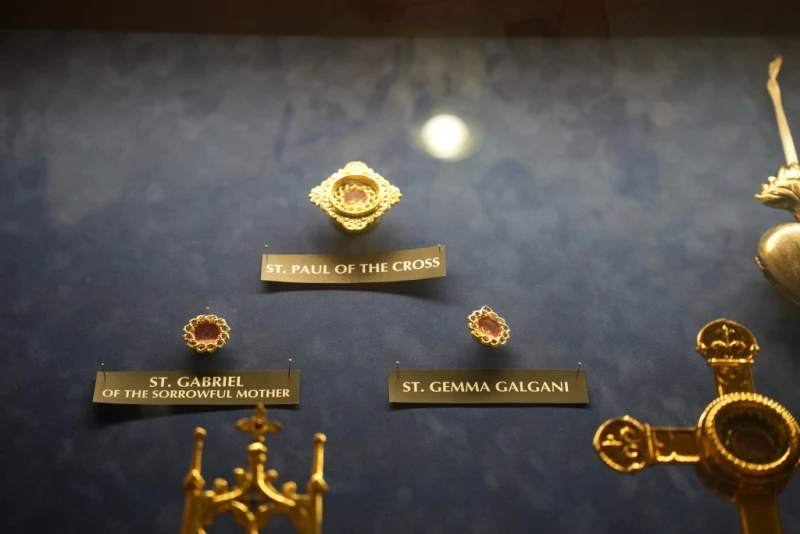


![Native American group loses religious freedom appeal at Supreme Court #Catholic
On Oct. 6, 2025, the U.S. Supreme Court denied a rehearing of the case filed by Apache Stronghold, a coalition of Native Americans and their supporters, that would have prevented the sale of a Native American sacred site to a mining company. / Credit: Photo courtesy of Becket
CNA Staff, Oct 8, 2025 / 12:00 pm (CNA).
A Native American group working to stop the destruction of a centuries-old religious ritual site has lost a last-ditch appeal to the U.S. Supreme Court to halt the transfer and obliteration of the Arizona parcel.The Supreme Court in an unsigned order on Oct. 6 said Apache Stronghold’s petition for a rehearing had been denied. The court did not give a reason for the denial.Justice Neil Gorsuch would have granted the request, the order noted. Justice Samuel Alito, meanwhile, “took no part in the consideration or decision” of the order. The denial likely deals a death blow to the Apache group’s attempts to halt the destruction of Oak Flat, which has been viewed as a sacred site by Apaches and other Native American groups for hundreds of years and has been used extensively for religious rituals. The federal government is selling the land to the multinational Resolution Copper company, which plans to destroy the site as part of a copper mining operation. The coalition had brought the lawsuit to the Supreme Court earlier this year under the federal Religious Freedom Restoration Act, arguing that the sale of the site would violate the decades-old federal statute restricting the government’s ability to encroach on religious liberty. The high court in May refused to hear the case. Gorsuch dissented from that decision as well, arguing that the court “should at least have troubled itself to hear [the] case” before “allowing the government to destroy the Apaches’ sacred site.”Justice Clarence Thomas dissented from the May ruling as well, though he did not add his dissent to the Oct. 6 denial of the appeal. In a statement, Apache Stronghold said that while the decision was "deeply disappointing, the fight to protect Oak Flat is far from over." The group vowed to "continue pressing our cases in the lower courts.""Oak Flat deserves the same respect and protection this country has long given to other places of worship," the group said. The coalition has garnered support from major Catholic backers in its religious liberty bid. Last year the U.S. Conference of Catholic Bishops joined an amicus brief arguing that lower court decisions allowing the sale of Oak Flat represent “a grave misunderstanding” of religious freedom law. The Knights of Columbus similarly filed a brief in support of the Apaches, arguing that the decision to allow the property to be mined applies an “atextual constraint” to the federal religious freedom law with “no grounding in the statute itself.”Though Apache Stronghold appears to have exhausted its legal options, the U.S. Court of Appeals for the 9th Circuit said on Aug. 18 that the Oak Flat site would not be transferred to Resolution Copper amid emergency petitions from the San Carlos Apache Tribe as well as the Arizona Mining Reform Coalition. That dispute is still playing out at federal court.](https://unitedyam.com/wp-content/uploads/2025/10/native-american-group-loses-religious-freedom-appeal-at-supreme-court-catholic-on-oct-6-2025-the-u-s-supreme-court-denied-a-rehearing-of-the-case-filed-by-apache-stronghold-a-coalition-of-na.webp)
